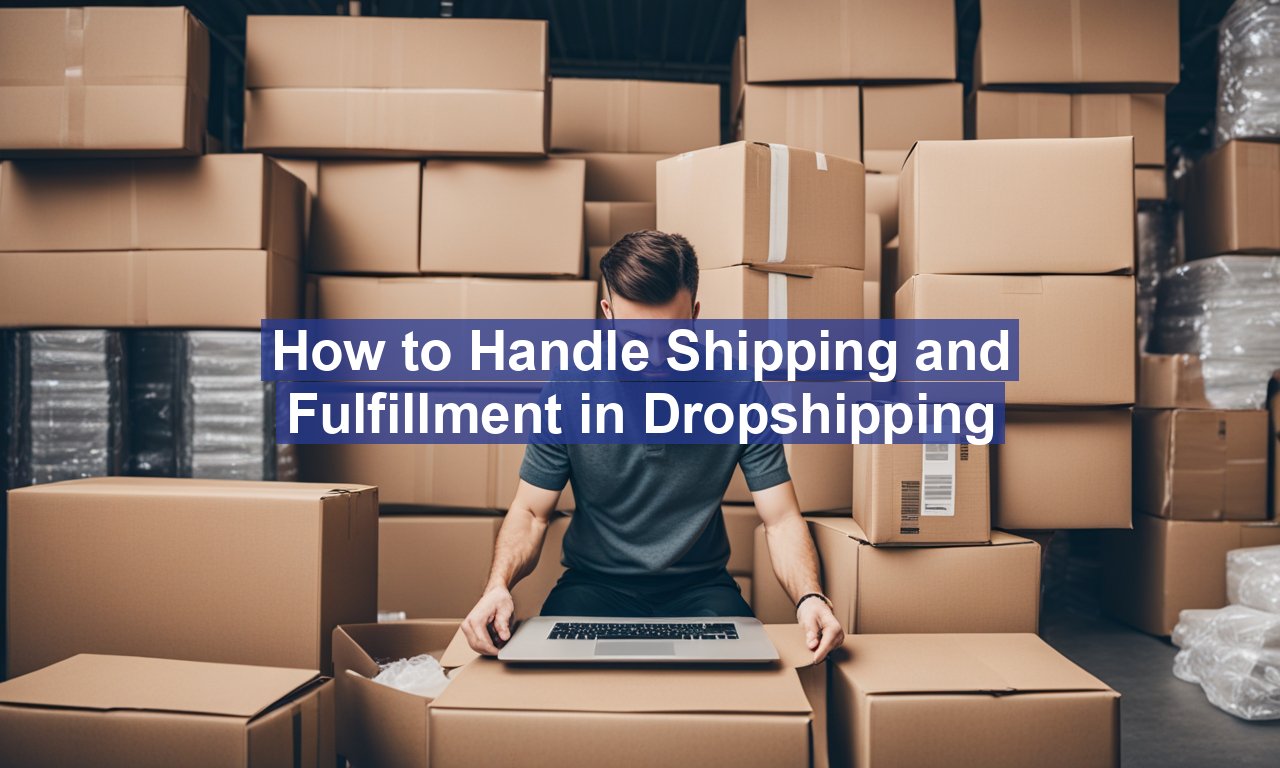How to handle shipping and fulfillment in dropshipping, In the evolving world of e-commerce, dropshipping stands out as a low-risk, high-reward business model for aspiring online entrepreneurs. However, managing how to handle shipping and fulfillment in dropshipping can often be a daunting task. Luckily, with the right strategies in place, you can streamline these operations and maintain a seamless supply chain.
Understanding the How to Handle Shipping and Fulfillment in Dropshipping Model
Before diving into shipping and fulfillment strategies, it’s essential to understand the framework of the dropshipping model. In this setup, you don’t hold inventory. Instead, when customers order products from your online store, you purchase these items from a third-party supplier who ships directly to the customer. This model minimizes overhead costs and allows you to focus on marketing and sales. For a detailed breakdown, you might find this explanation from Shopify enlightening.
Choosing the Right Suppliers
The foundation of successful dropshipping lies in selecting reliable suppliers. Your suppliers not only determine product quality but also impact your shipping efficiency. Here are some key considerations:
- Reputation: Research supplier reviews and ratings. Platforms like AliExpress offer a wealth of feedback from other business owners.
- Shipping Times: Look for suppliers that offer reasonable shipping times, ideally within a week or two, to keep customers satisfied.
- Communication: Establish clear lines of communication. A responsive supplier can swiftly resolve stock issues and delays.
Optimizing Shipping Strategies
Shipping is the backbone of your customer experience. Poor shipping practices can lead to dissatisfied customers and negative reviews. Here are strategies to optimize shipping:
Offer Multiple Shipping Options
Providing a variety of shipping options allows customers to choose based on their urgency and budget. Free shipping, standard delivery, and express shipping are typical options to consider.
What Does Mis Shipped Mean USPS Shipping
Mis shipped” in the context of USPS shipping refers to a package that has been sent to the wrong address or location, often due to an error in labeling, sorting, or handling. This can happen for various reasons, such as incorrect address information, sorting mistakes at a facility, or issues during transit. If a package is mis shipped, it may take extra time to be redirected to the correct address, and you might need to contact USPS for assistance in resolving the issue.
Track Your Shipments
Use tracking systems to keep customers informed about their order status. This transparency builds trust and reduces anxiety about delivery times.
Establish Clear Shipping Policies
Clearly outline your shipping policies on your website. Include information about shipping costs, delivery times, and handling procedures to set accurate customer expectations.
Handling Fulfillment Like a Pro
Even in dropshipping, fulfillment isn’t entirely hands-off. You still need to manage several aspects to ensure success:
Automate Order Management
Implementing an automated system for order processing can streamline fulfillment. Tools like Oberlo and Spocket allow for direct integration with your online store, reducing manual errors.
Regularly Update Inventory Information
Staying updated on inventory levels prevents selling out-of-stock products. Regular checks with suppliers and automated inventory syncs can help keep your stock data accurate.
Handle Returns Efficiently
Develop a straightforward return process. Some suppliers offer return handling, which can simplify your operations. Clearly communicate your return policy to customers to avoid misunderstandings.
Leveraging Technology for Efficiency
To maintain a competitive edge in dropshipping, leveraging technology is crucial. Here are some technologies that can transform your shipping and fulfillment process:
- Inventory Management Software: Tools like ShipStation and TradeGecko help manage and track inventory across multiple suppliers efficiently.
- Customer Relationship Management (CRM): Using CRM tools ensures your customer interactions are logged and managed, thus enhancing customer service.
- Analytics Tools: Analyzing customer data can provide insights into shipping times, popular regions, and product demands, aiding in strategic planning.
Maintaining Customer Satisfaction
At the heart of every successful dropshipping business is satisfied customers. Here’s how to keep your clientele happy:
Communicate Proactively
Whether it’s a delay or a backorder, keeping your customers informed is crucial. Regular updates via email or SMS notifications can go a long way in maintaining trust.
Gather and Implement Feedback
Regularly solicit and analyze customer feedback to identify areas of improvement. Customers appreciate when their opinions shape their shopping experiences.
Conclusion
How to handle shipping and fulfillment in dropshipping requires thoughtful planning and strategic partnerships. By focusing on reliable suppliers, optimizing shipping, automating processes, and leveraging technology, you can create a seamless operation that enhances customer satisfaction and drives business growth. For more insights into effective e-commerce strategies, explore this comprehensive guide on building a successful e-commerce business.


